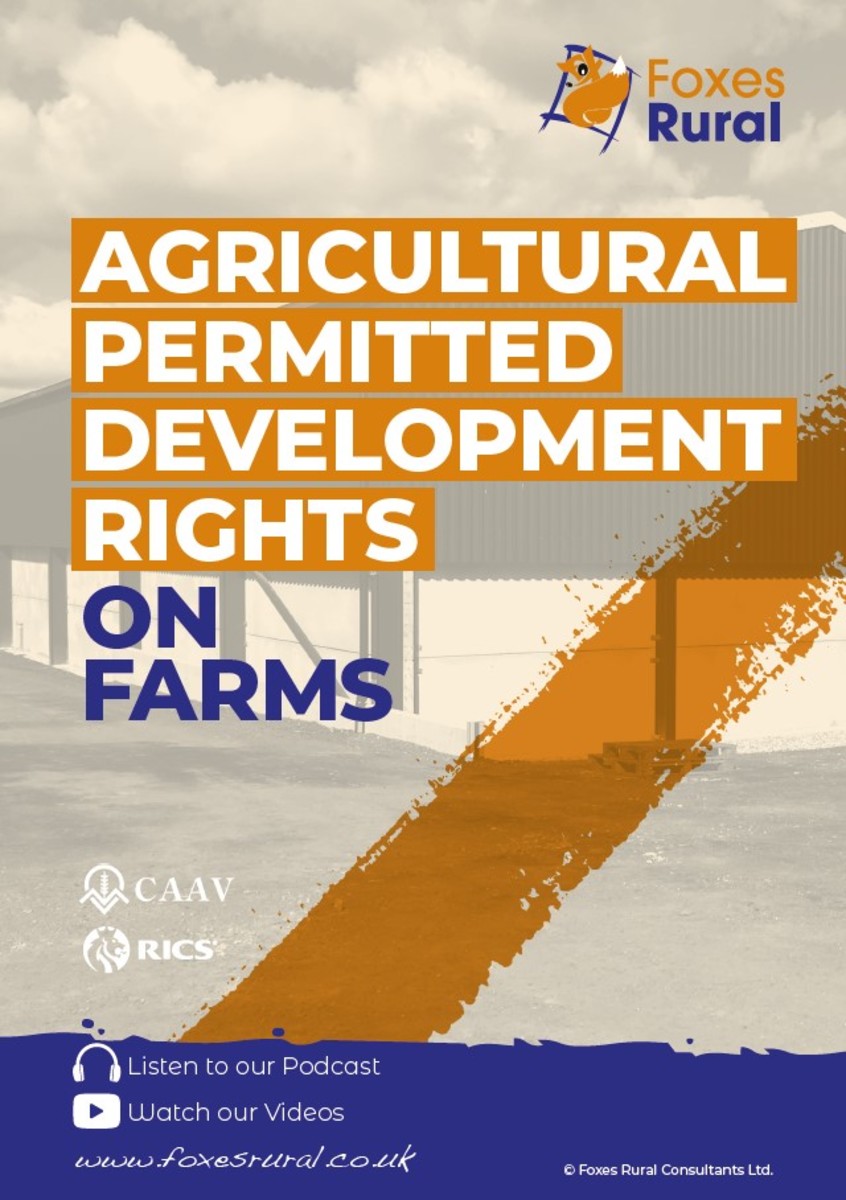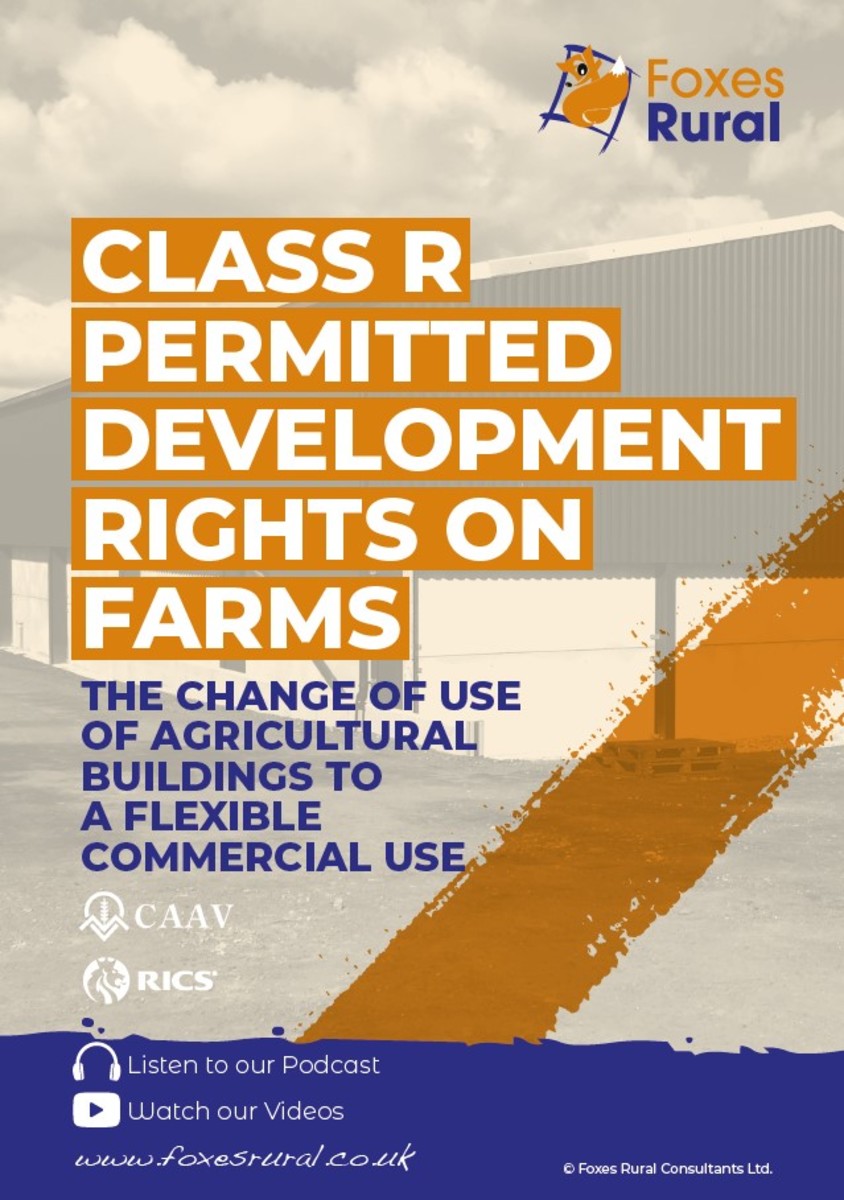Insights | February 20 2023
Latest newsFarm Planning Experts Give Their View On Clarkson’s Farm
Guy French, Director of Foxes Rural, translates the challenges presented in the hit reality show into real world meaning.
The relaunch of Clarkson’s Farm gives an excellent insight into the challenges that we face as planning consultants acting on behalf of farmers. However, there are also some valuable opportunities in the planning system which are worth highlighting.
A very flexible and broad system exists for permitted development rights on farms, which include:
1. New farm buildings up to 1,000 sq.m every 2 years
2. The laying of hardstanding on a farm of up to 0.5ha without the requirement for even a prior approval application
3. The excavation of reservoirs on your farm (subject to the scale being justified for the land area)
4. The laying of farm tracks, at a scale that again has no upper limit, it simply must be deemed reasonably necessary for the scale of the farm holding
5. The excavation of mineral for your own use as long as it does not lie within 25 metres of a classified road
It is our opinion that the overarching planning system is actually already incredibly expansive and supportive to farmers, but it is with the local planning authorities where barriers to development and progression of farm businesses arise. In our experience, these are largely due to a lack of understanding of our industry from planning officers, and nimbyism from local people.
An example, as well demonstrated by Clarkson and referenced above, is that permitted development rights allow you to excavate your own mineral to lay yourself a farm track (all with the submission of a prior notification application). Yet applications of this or a similar nature are either refused or significantly delayed, again in our experience, due to landscaping officers, councillors, planning officers, and/or other stakeholders, not being familiar enough with the prior approval process, and not embracing the need for development in particular circumstances, especially when done so sustainably and responsibly.
Furthermore, alongside nimbyism, the reputation of farmers is damaged by a general tendency amongst the non-farming, rural-dwelling public to jump to immediate conclusions about development when sighting particular equipment on farms, for example diggers. This represents a common example and challenge as, whilst they are not wrong that diggers are used in development, diggers are also a staple machine on farms – aiding in ditching, muck removal, soil movement, farm building works, reservoirs, field drainage … the list goes on. Here is where we need education about the farming profession and the broad roles and responsibilities untaken by its workforce to run, protect, sustain and maintain a profitable farming operation. Only with this education, can we expect the public to slowly adapt their thinking and therefore not hinder farmers’ justified development applications when they do arise.
Clarkson also portrayed frustrations with the local planning process when it comes to farm diversification proposals, such as his restaurant and car park. It’s showed that the economic benefits and growth that Clarkson has bought to the rural area is profoundly positive. His shop draws crowds by the 100s and 1000s, with the positive knock-on effects to other local businesses, pubs, hotels, shops etc. surely worth celebrating. So, it is certainly not difficult to recognise that there is an essential agricultural need to accommodate the traffic, otherwise it congests the highways. Yet no such recognition is evident. Moreover, any presumption in favour of sustainable development for a restaurant, creating local jobs and using local produce, is refused.
It is claimed by critics that this is due to Clarkson being a celebrity. But as planners, we’d go further than that. We’d say that there is generalised and significant negative attitude held by local authorities when landowners have innovate proposals for diversification. Again, there has to be an education gap here. Additionally, quite often as Clarkson showed, lots of bureaucracy and cost is associated with applications, meaning that proposals sometimes struggle to even get off a starting block. There needs to be some recognition of this in order to support farmers to diversify in the ways necessary to protect their businesses, as they move through to a new era of farming without EU subsidies.
An example from our own books is an application for a rural change of use of a field requiring an electric charging point. Justification was clear – there was no grid supply and five users per day, plus there was no bus route. Yet the application was delayed by a planning officer for 12 months.
It is not that there is no support from local authorities, but what Clarkson shows is that the prior approval process, which is positive and encouraging towards farm growth, is misinterpreted and misunderstood by an overwhelming majority. He also shows that there is a lack of presumption in favour of sustainable and bona fide rural diversification growth ideas, despite the National Planning Policy Framework introducing such a principle to aid in the positive planning of sustainable development.
So where do we go from here? Well Clarkson’s made our start. He’s got people talking. He’s got experts like us waving our flag in a more prominent space. Now, we have to build on the exposure, and make every effort to work with government officials to provide education and awareness to local authorities and the public in a bid to make a distinct change to the cynical perception adopted in respect of rural change.
Foxes Rural Contact
Foxes Rural Contact
Guy French
Director
07842 527064
Insights
Insights | December 02 2025
What is the maximum height I can build a farm building under permitted development?
Insights
Insights | November 30 2025
Can I build farm sheds if I just own a tractor?
Insights
Insights | November 18 2025
How to Make the Most of Planning Permission and Permitted Development on Your Farm




